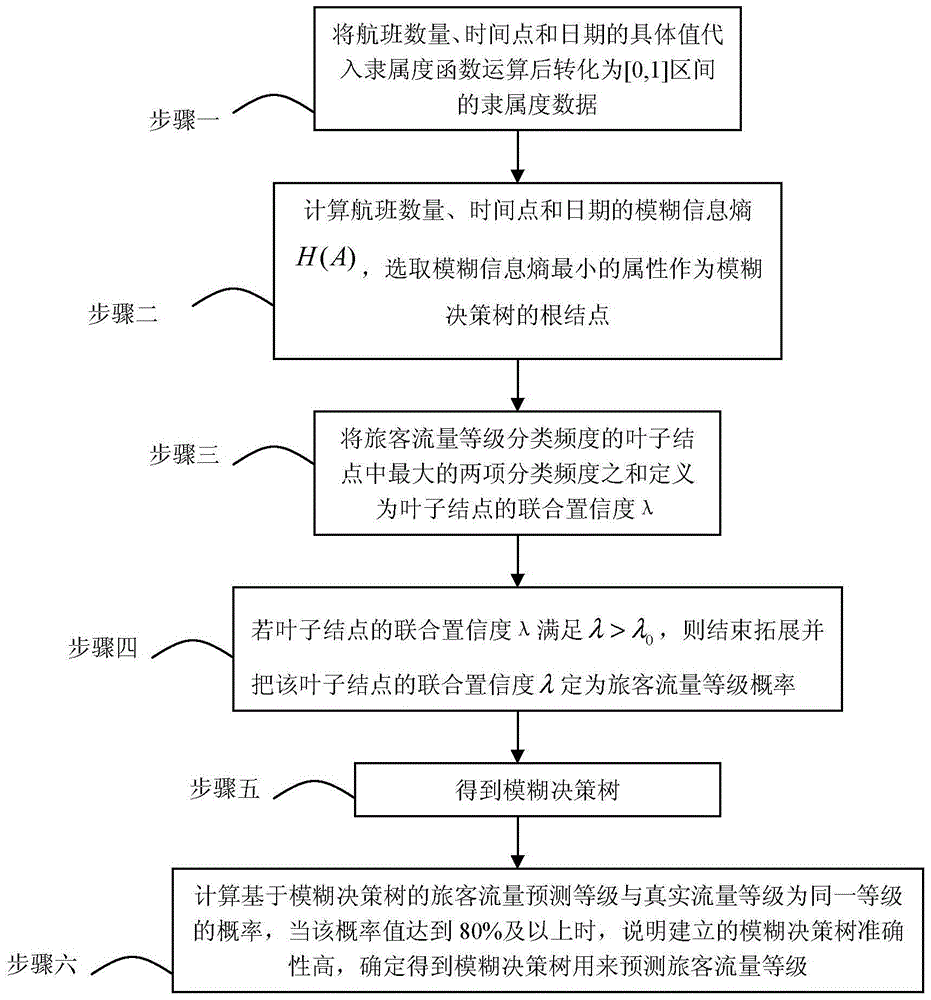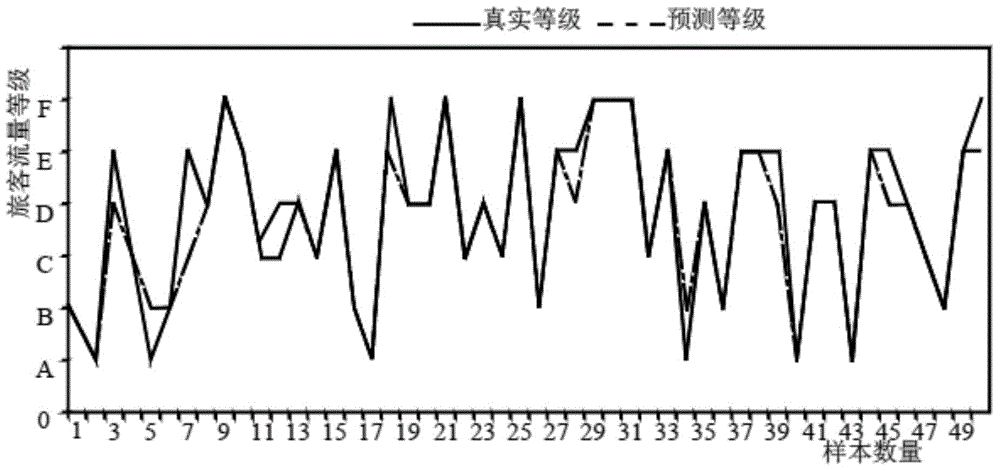Airport terminal departure passenger traffic volume prediction method based on fuzzy decision-making tree
A fuzzy decision tree and flow forecasting technology, applied in forecasting, instrumentation, data processing applications, etc., can solve the problems of fuzzy terminal departure passenger flow, terminal congestion optimization speed, low promotion ability, etc. The speed of optimization is slow, the prediction process is simple, and the effect of low efficiency is solved
- Summary
- Abstract
- Description
- Claims
- Application Information
AI Technical Summary
Problems solved by technology
Method used
Image
Examples
specific Embodiment approach 1
[0019] Specific implementation mode one: a kind of fuzzy decision tree-based method for predicting the flow of passengers departing from the terminal of the present implementation mode is specifically prepared according to the following steps:
[0020] Step 1. Fuzzy preprocessing is performed on the statistical data with attributes, that is, the specific values of the number of flights, time points and dates are substituted into the membership degree function operation and then converted into membership degree data in the [0,1] interval; where the attributes include flights Quantity, time and date;
[0021] Step 2, calculate the fuzzy information entropy H(A) of the number of flights, time points and dates, and select the attribute with the smallest fuzzy information entropy as the root node of the fuzzy decision tree;
[0022] Step 3: Using 60% to 80% of the membership degree data obtained in step 1, use the decision tree algorithm and the root node to establish a fuzzy dec...
specific Embodiment approach 2
[0030] Specific embodiment two: the difference between this embodiment and specific embodiment one is: the number of flights in step one is x including M 1 , M 2 , M 3 and M 4 four states;
[0031] m 1 Indicates that the number of flights is small, and the number of flights is 0~4, M 2 Indicates that the number of flights is small, and the number of flights is 4 to 8. M 3 Indicates that the number of flights is large and the number of flights is 8-12 and M 4 Indicates that the number of flights is large and the number of flights is 12 to 16. Other steps and parameters are the same as those in Embodiment 1.
specific Embodiment approach 3
[0032] Specific implementation mode three: the difference between this implementation mode and specific implementation mode one or two is: in step one, the number of flights is x according to the calculation process of the degree of membership function:
[0033] M ( x ) = M 1 ( x ) = 1 x ≤ 4 8 - x ...
PUM
 Login to View More
Login to View More Abstract
Description
Claims
Application Information
 Login to View More
Login to View More - R&D
- Intellectual Property
- Life Sciences
- Materials
- Tech Scout
- Unparalleled Data Quality
- Higher Quality Content
- 60% Fewer Hallucinations
Browse by: Latest US Patents, China's latest patents, Technical Efficacy Thesaurus, Application Domain, Technology Topic, Popular Technical Reports.
© 2025 PatSnap. All rights reserved.Legal|Privacy policy|Modern Slavery Act Transparency Statement|Sitemap|About US| Contact US: help@patsnap.com



